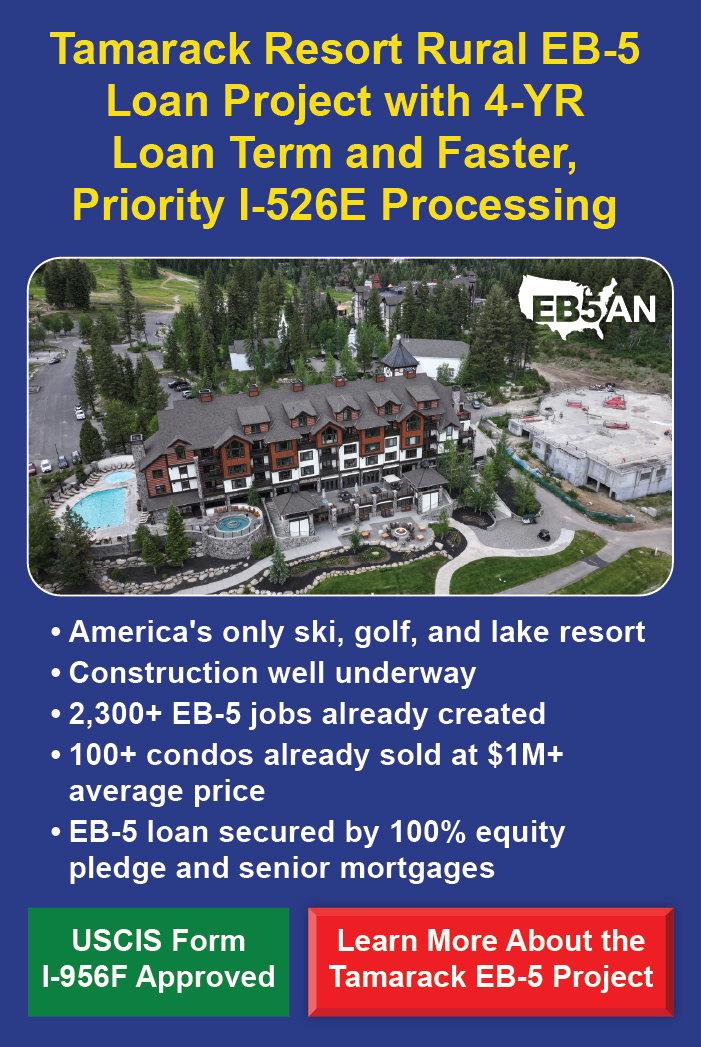
Every year, the U.S. government sets aside a specific number of visas for each immigrant visa category under the Immigration and Nationality Act (INA). However, not all visas in one category may be used within a year, while other categories may have surplus applications. When this happens, the U.S. Department of State (DOS) redistributes the unused visas by carrying them over to the following year, and across different categories in some cases.
EB-5 visa carryovers can significantly impact investors by increasing the total number of visas available. Consequently, EB-5 applicants may receive their visas earlier, and the U.S. Citizenship and Immigration Services (USCIS) can speed up the EB-5 process.
Ideally, once an EB-5 applicant has filed the right petitions and met all the EB-5 investment requirements, they should be granted a U.S. Green Card, but this is not always the case. Other factors such as EB-5 visa availability may influence applicants’ chances of obtaining permanent residence in the U.S. Therefore, EB-5 investors should learn how unused EB-5 visas are reallocated and use this information to their advantage.
In this post, we will explain how EB-5 visas are allocated each year, what happens to unused EB-5 visas, and how this impacts the EB-5 program and the investors involved.
EB-5 Carryovers and Other Key Terms
How Are EB-5 Visas Allocated?
How Are Unused EB-5 Visas Carried Over?
Start Your EB-5 Journey With EB5AN
EB-5 Carryovers and Other Key Terms

To fully understand how EB-5 visa carryovers work, investors must be familiar with certain terms relating to EB-5 visa availability and the important dates leading up to the receipt of their Green Cards.
EB-5 Visa Carryovers
EB-5 visa carryovers are unused visas in a given year that get rolled over to the next year. DOS processes EB-5 visa carryovers to increase EB-5 visa availability, reduce backlog, and speed up EB-5 processing times.
Reserved Visas
To redirect investments to areas that need them the most, the U.S. government sets aside a percentage of EB-5 visas for specific targeted employment areas (TEAs), namely rural regions, high-employment areas, and infrastructure projects. The government encourages investments in these targeted areas by setting a lower investment threshold for them, as well as offering “reserved” visa availability, which especially benefits new investors from otherwise backlogged countries. This way, investors who apply for reserved visas have shorter waiting times than regular EB-5 processing times.
Unreserved Visas
EB-5 projects outside of targeted employment areas that do not qualify for reserved set-asides fall under the “unreserved” category. They take longer to process, and once the given annual limit is exceeded, affected investors would have to wait until their priority date becomes current again. This is where Chinese and Indian investors are currently facing backlogs.
Visa Bulletin

An investor’s priority date is when USCIS receives their Form I-526 or I-526E immigrant petition. This date is essential for the EB-5 investor as it marks their position in line for an EB-5 visa. When an EB-5 investor’s priority date falls before the final action date on the visa bulletin, it means that an immigrant visa is available for their use. However, priority dates that fall after the final action date exceed the EB-5 annual visa limit and a visa will not be issued until it becomes available.
Final Action Date
Final action dates are also indicated in the visa bulletin. It is the date when EB-5 investors who have an approved immigrant petition can expect to adjust status.
How Are EB-5 Visas Allocated?

There is an annual limit for employment-based visas, which also includes eligible dependents. Under the INA provisions, EB-5 visas account for around 7% of the total employment-based visas.
Of these visas, 32% are set aside for three categories of EB-5 applicants. Specifically, 20% are for applicants who invest in rural areas, 10% are for applicants who invest in areas with high unemployment, and 2% are for those who invest in infrastructure projects.
The remaining 68% constitute unreserved EB-5 visas.
How Are Unused EB-5 Visas Carried Over?

Within certain limitations, DOS may transfer unused visas from the family-based to the employment-based categories, including EB-5.
Unused visas within the same category may also be redistributed. For instance, where there are unused EB-1 visas, DOS may transfer them to another employment-based visa category, such as the EB-2 visa.
Impact of RIA
With the enactment of the Reform and Integrity Act of 2022 (RIA), new visa carryover provisions under the reserved categories were introduced. According to this, unused reserved visas from the fiscal year immediately prior will be rolled over to the current fiscal year within the same category. If these reserved carryover visas are not used within that fiscal year, either, then they will be carried over to increase the unreserved visa numbers.
This means that the reserved visas from FY 2022 were carried over to FY 2023. As FY 2023’s reserved visas also weren’t used in the same year, they rolled over to FY 2024. This translates into an unusually high number of EB-5 visas being available in FY 2024, including those made available in the unreserved category. If USCIS and relevant U.S. consulates and embassies in retrogressed countries can process these available visas efficiently, this relatively new EB-5 visa carryover policy may help ease current backlogs.
Start Your EB-5 Journey With EB5AN

The EB-5 Immigrant Investor Program is one of the most straightforward pathways to obtaining permanent residency in the U.S. However, the program often involves complicated details, leaving many investors frustrated and discouraged. This is why seeking guidance from experienced EB-5 professionals can help you through every step of the process.
To learn more about the EB-5 program, please feel free to book a free consultation with us.











